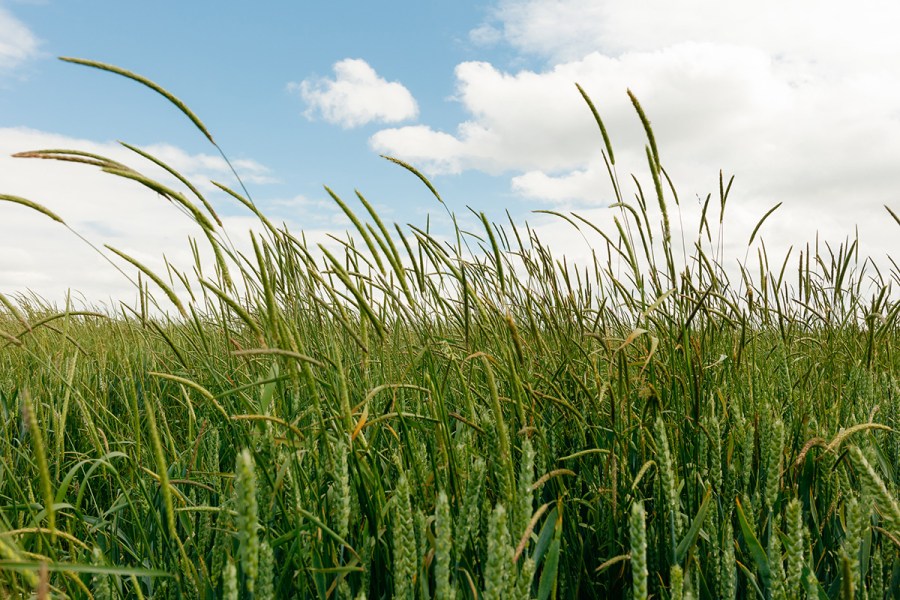“We started the year with news headlines that glyphosate resistance has officially been found in Italian ryegrass in the UK. For some time, farmers have noticed the efficacy of glyphosate decreasing, but now it’s been verified by scientists from ADAS who screened seed samples from a farm in Kent. With resistance also being found in other countries, nature is slowly getting the upper hand on this product.
“Like many other products in the past, not using full application rates or ignoring best practices eventually supports the plant in building resistance to the product. With much of our farming system being built around the availability of an effective product for killing green cover, this news may mean big problems for the future.
“The UK government has committed to reducing pesticide use, and we’ll know more details about the specifics when the UK National Action Plan (NAP) – a five-year plan to reduce the risks of pesticides on human health and the environment – is published later this year. In addition, the license for glyphosate will be up for renewal, so there’ll be increased focus on its relative risks and benefits.
“More and more, the general public and health and environmental organisations are raising concerns about the dangers of glyphosate to human health, which include gastrointestinal, metabolic, and developmental problems – and even cancer.
“In contrast, many farmers believe glyphosate is essential to their system and for successful yields; the debate is going to become increasingly lively. I’m often told by farmers that we couldn’t farm without it, but I just point out the many thousands of organic farmers who are already successfully farming without it.
“Their farming systems are very different, yes, but we shouldn’t fear change. Like many, I can see the benefits of having the product available to kill cover cops and weeds in fields. But I believe we’d have a stronger argument for its continued use if we stopped applying it to products going into the human food chain, as so many of the general public are strongly against eating food that has been treated with and may contain glyphosate.
“We farmers are also receiving pressure from water companies, who are finding high levels of it in the water courses, well above the legal limits they must abide by.
“Building any farming system reliant on one product or method is highly risky. History shows us that nature will always eventually work around what we impose upon it, whether that’s chemical resistance, changes to weed varieties or failing varieties, we have to adapt continually.
“Rather than fight nature, why don’t we work with it? One of the strongest ways to avoid these problems is by having a robust integrated pest management (IPM) plan. Careful varietal selection, inter-cropping, beetle banks and flowering margins are all free tools at our disposal to reduce the impacts of weeds and pests while minimising the chances of pesticide resistance with reduced use.
“As regenerative methods such as IPM grow in popularity, there’s an increased focus on reduced tillage and direct drilling. But employing some cultivation to terminate weeds in place of chemicals may become increasingly important.
“As I’ve heard it said before: ‘It’s not the plough, it’s the how’. We’re farming in a climate of change; we require an increased focus on trials which explore the best methods for building soil health through reducing tillage while reducing pesticides and still delivering good yields.
“There’s less pressure to succeed if we begin trialling adapted methods now while the products are still available, than if we wait until they’ve been banned or are no longer effective with increasing resistance – whichever comes first.
“The range of machinery we’ll require in the future may change. We’ll likely need a cultivator that can move soil at a shallow depth to terminate roots without disturbing the soil’s intricate microbiome and mycorrhizal network – also integral for pest resistance.
“An increasing amount of reliable information is becoming available on how to remove weeds in a growing crop; looking at some of the robotic/autonomous machinery being developed, individual treatment may be possible soon without using chemicals. We’re only at the beginning of this research area as we transition.
“Whether we embrace these changes now or attempt to resist them, they are coming. Putting all our eggs in one basket is becoming increasingly risky. What would your farming system look like without glyphosate?”
This article was taken from the latest issue of CPM.
For more articles like this, subscribe here.
Sign up for Crop Production Magazine’s FREE e-newsletter here.




